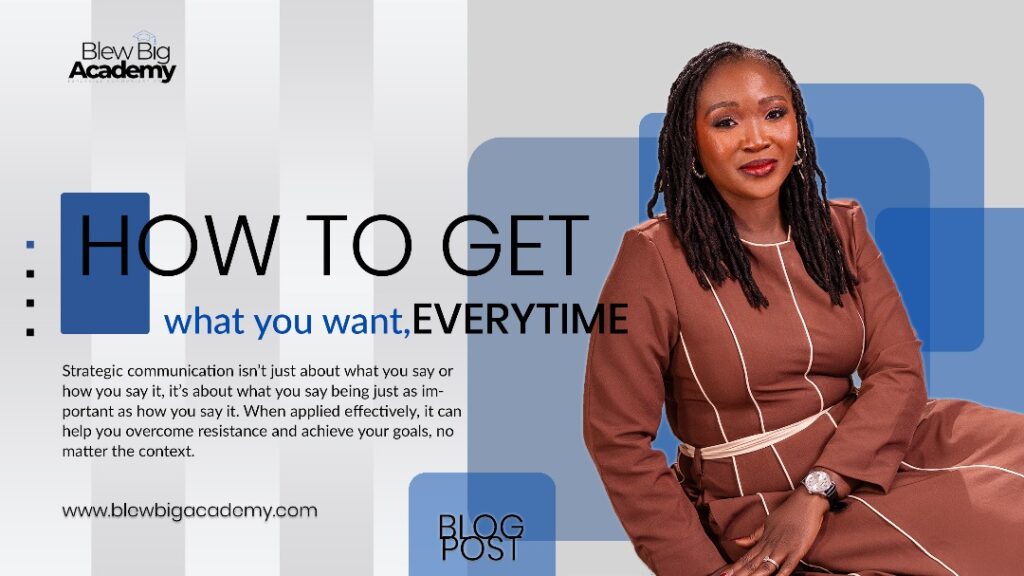Have you ever been stuck in a frustrating conversation where no matter what you say, the other person just doesn’t get it? Whether it’s a family member, spouse, or boss, the words seem to fall on deaf ears, leaving you wondering if effective communication is even possible.
Here’s the good news: it is possible, and the solution lies in strategic communication.
Strategic communication isn’t just about what you say or how you say it, it’s about what you say being just as important as how you say it. When applied effectively, it can help you overcome resistance and achieve your goals, no matter the context.
Two Stories, One Method
To show you how this works, let me share two real-life scenarios where strategic communication was used to get results, one from a professional life and one from a personal life.
The Professional Scenario
On Nora’s very first day as a communications specialist, she faced an unexpected challenge from her boss: “Can you reach out to Google to secure a partnership for our event next month?”
It was a daunting task for her first day, especially when she expected to focus on onboarding and paperwork. However, Nora saw this as an opportunity to make a strong first impression.
She began by researching Google’s mission, identifying the types of partnerships they typically valued, and aligning them with her organization’s objectives. With this insight, she crafted a compelling email that highlighted the mutual benefits of collaboration and emphasized the importance of their support.
To her surprise, less than 24 hours later, Google replied with an enthusiastic, “We’re in!”
The Personal Scenario
That same evening, Jessica, one of Nora’s friends, sent her an excited DM. “Nora, the guy I like just liked my Instagram post! What do I do next?”
Jessica was eager to turn that “like” into something meaningful, so Nora asked her a few thoughtful questions:
- What do you know about him?
- What do you want to achieve?
Jessica explained that he shared her love for music, food, and family. Recognizing the shared interests, Nora advised her to start an organic conversation, focusing on letting him reveal his values and interests naturally. Jessica followed the advice, and six months later, the two were officially a couple.
What These Stories Have in Common
At first glance, these scenarios seem worlds apart, one involves securing a corporate partnership, and the other, navigating the complexities of modern romance. But the success in both came down to applying the same four-step method:
- Identify the Goal:
- In the professional scenario, the goal was to land a partnership with Google.
- In the personal scenario, the goal was to help Jessica start a relationship.
- Understand Your Audience:
- Nora researched Google’s mission and values.
- Jessica and Nora analyzed Jessica crush’s Instagram to understand his interests.
- Communicate the Value:
- Nora showed Google how the partnership would benefit them.
- Jessica highlighted her shared interests to create a meaningful connection.
- Express the Need:
- presented the mutual benefits of the partnership to Google.
- Jessica expressed how their shared values could lead to something special.
Why Strategic Communication Works
Strategic communication is about more than just exchanging words; it’s about communicating with purpose to showcase value and achieve your goals. It’s a skill that helps you evoke the right responses from your audience while creating mutually beneficial outcomes.
However, it’s crucial to follow the four steps. Skipping even one can lead to misunderstandings or missed opportunities. For example:
- Failing to identify the goal may cause you to speak without purpose.
- Ignoring your audience’s values might make your message irrelevant.
- If you don’t communicate value, your message could be dismissed.
- Neglecting to express the need leaves your audience unsure why they should care.
Applying Strategic Communication to Your Life
Whether you’re navigating workplace challenges, building relationships, or presenting your ideas, strategic communication is a game-changer. By following this method, you’ll be equipped to combat resistance, foster understanding, and achieve your goals more effectively.
So, the next time you’re faced with a communication hurdle, remember:
What you say is just as important as how you say it.
Now, go out there and strategically communicate your way to success!

